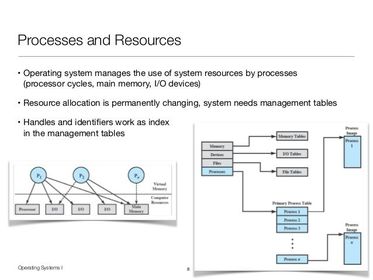computer science operation systems
Angeheftet an
56
0
0
Keine Merkmale angegeben
|
|
Erstellt von Sophye Reynolds
vor mehr als 8 Jahre
|
|
Schließen
|
|
Erstellt von Sophye Reynolds
vor mehr als 8 Jahre
|
|

OPERATING SYSTEM FUNCTIONS
In any computer, the operating system:
controls the backing store and peripherals such as scanners and printers
deals with the transfer of programs in and out of memory
organises the use of memory between programs
organises processing time between programs and users
maintains security and access rights of users
deals with errors and user instructions
allows the user to save files to a backing store
provides the interface between the user and the computer - for example, Windows Vista and Apple OSX
BOOTING THE COMPUTER:
Computers powered by the central processing unit can only execute code found in the systems memory. Modern operating systems and application program code and data are stored on nonvolatile memories or mass storage devices. When a computer is first powered on, it must initially rely only on the code and data stored in nonvolatile portions of the systems memory. At boot time, the operating system is not really loaded and the computer’s hardware cannot peform many complex systems action.
The program that starts the “chain reaction” which ends with the entire operating system being loaded is known as the boot loader (or bootstrap loader). The term creatively came from early designiners imagining that before a computer “runs” it must have it’s “boots strapped”. The boot loader’s only job is to load other software for the operating system to start. Often, multiple-stage boot loaders are used, in which several small programs of increasing complexity sequentially summon one after the other, until the last of them loads the operating system.
RESOURCE SYSTEMS:
Being the most fundamental of all system programs, Operating Systems are trusted with the job of controlling and sorting through the hardware, and this includes all the main components of the computer. To ensure that there is little confusion, the OS programs managing the key resources are giving relatively simple names depending on the resource they manage:
Key Resource OS Program
Processors Processor Scheduling
Storage Memory management
I/O devices I/O management
Data File management


 Verberge bekannte Karten
Verberge bekannte Karten